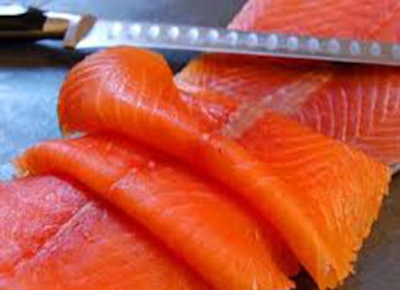
Washington, DC — The pathogen, Listeria monocytogenes grows on refrigerated smoked salmon by way of different metabolic pathways from those it uses when growing on laboratory media. The research could lead to reduced incidences of food-borne illness and death, said principal investigator Teresa Bergholz, PhD. The research appears July 24 inApplied and Environmental Microbiology, a journal of the American Society for Microbiology.
In the study, the investigators showed that L. monocytogenes grows on cold smoked salmon by using different metabolic pathways to obtain energy from those it uses on laboratory media, even when the media was modified to have the same salt content and pH as the salmon. To grow on the salmon, the bacterium upregulates genes that enable it to use two compounds from cell membranes--ethanolamine and propanediol--as energy sources.
In an interesting parallel, L. monocytogenes, as well as Salmonella, is known to use those same genes to grow within a host--in the gastrointestinal tract, and on macrophages. "There may be ways we can use this information to control the pathogen both in foods as well as in infected people," said Bergholz, assistant professor in the Department of Veterinary and Microbiological Sciences at North Dakota State University, Fargo. "Understanding how a foodborne pathogen adapts to environmental stresses it encounters on a specific food could allow food microbiologists to develop inhibitors of metabolic or stress response pathways that are necessary for the pathogen to grow or survive on that product."
"The information may also enable improved risk assessments, as virulence of a pathogen may be affected considerably by the stress responses and/or metabolic pathways used to survive on the food," said Bergholz.
Bergholz noted that ready to eat products typically have very low levels of contamination withL. monocytogenes, and that the bacterium must be able to grow on the product during refrigerated storage in order to reach an infectious dose. "In many cases, the addition of organic acids will slow or stop the growth of this pathogen on ready to eat meats and seafood."

















